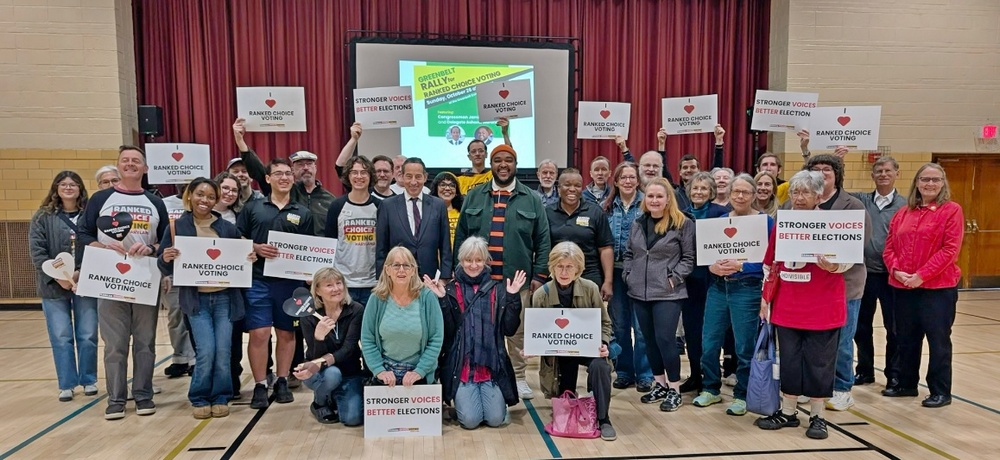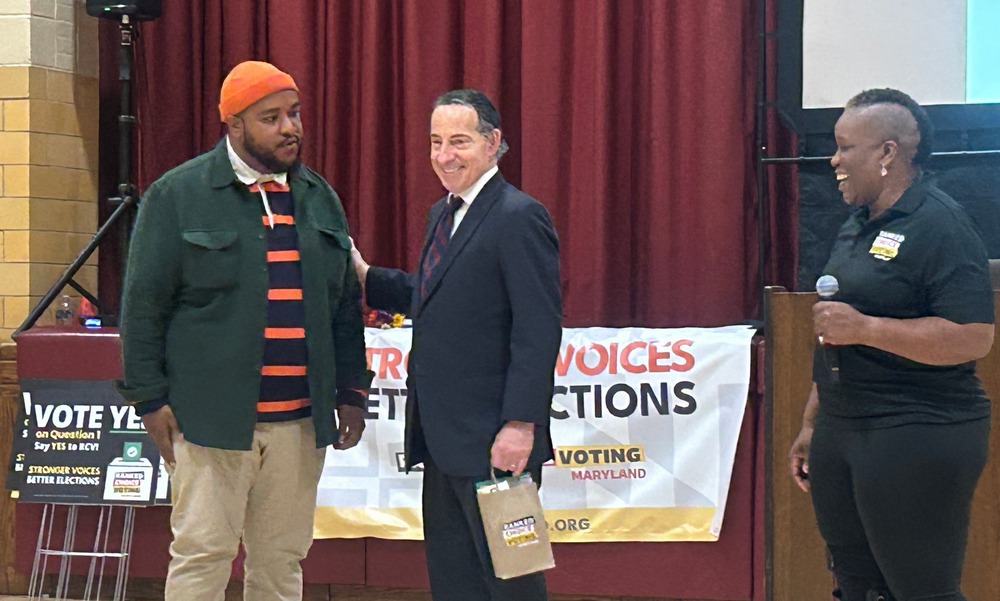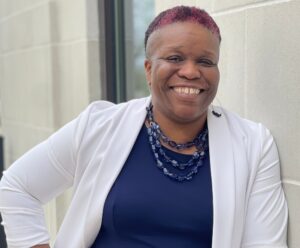
.
by Michelle Whittaker, Executive Director for Ranked Choice Voting Maryland
Greenbelters have a chance to upgrade the way you vote this November, and it’s all about a better, stronger democracy.
Question 1 asks voters to decide if they want to adopt ranked choice voting (RCV) and eliminate the 40% rule. Over the last several weeks, volunteers have been hitting the doors across Greenbelt. Overwhelmingly, people say they like RCV and would like to see it in the city and beyond. People grasp the concept of ranking because we do it in our lives every day.
Residents have asked two main follow-up questions: 1) How will the mayor be selected? and 2) Are we lowering the threshold to win?
On the first question: this referendum does not address the process for selecting the Mayor. The City Charter invests the selection of these positions to the council.1 The custom has been to designate the highest vote-getter and the second-highest vote-getter as Mayor and Mayor Pro Tem, respectively. Fun fact: When Cincinnati, OH used RCV in the 1900s, the candidate with the highest first-choice votes was chosen as the mayor. 2 So it is possible to use RCV to help the Council select the mayor and mayor pro tem. A discussion on the process for selecting these positions is important, and I hope Greenbelters will engage the Council on that more.
The second question is all about fair representation.
Monopoly versus Fair Representation
Greenbelt currently uses an at-large plurality voting system with voters having up to seven votes. This type of system elects the candidates with the most votes. The City’s election code includes a 40% threshold to win, where candidates need 40% of the voters.3 But the reality is – the same 40% of voters can elect all seven councilmembers, leaving the other 60% unrepresented.
At-Large plurality voting is winner-take-all. It allows a small but cohesive group a monopoly over who gets elected. Civil rights groups like the Campaign Legal Center and the NAACP Legal Defense Fund have pointed out that at-large plurality voting dilutes votes and shuts out some voters from representation. This voting method is banned for federal elections thanks to the Voting Rights Act. It has a history of being used to hold on to power and prevent fair representation. It’s a legacy of the past, not our future.
Let’s talk about voting power for a moment. Voters in precincts 3 and 6 account for the highest turnout and dominate Greenbelt elections. These precincts also have the largest White populations. These two precincts alone accounted for over one-third of the votes that candidates received in 2021 and 2023. In every election from 2011 to 2019, it was over fifty percent! Because of winner-take-all rules, the outcome has been a majority White council in a majority Black and Latino city.
The bottom line is that at-large plurality voting dilutes voting power and discourages competition. If we want to give all Greenbelters fair representation and equal voice in electing the Council, ranked choice voting is a proven solution.

Choice, Consensus, and Civility
To fight back against polarization and extremism, we need better and more representative democracy, not the status quo. Ranked choice voting empowers voters to more fully express their vote. It eliminates strategic voting and the spoiler effect while encouraging healthy competition. Whether you are electing one person (like a mayor or governor) or multiple people (like a city council or state legislature), ranked choice voting incentivizes candidates to reach beyond their base of support and meet a threshold for winning.
| Election Thresholds | |
|---|---|
| Seats to Elect | Percent to Win |
| 1 Seat | 50% + 1 |
| 2 Seats | 33.3% + 1 |
| 3 Seats | 25% + 1 |
| 4 Seats | 20% + 1 |
| 5 Seats | 16.7% + 1 |
| 6 Seats | 14.3% + 1 |
| 7 Seats | 12.5% + 1 |
The “Election Thresholds” table shows the percentage of votes needed to win a seat in a ranked choice voting election.
What does this mean for Greenbelt? More voices will be represented.
Now, a little bit of electoral math: for 7 at-large members to be elected, the threshold to win a seat is 12.5% plus one vote. That means a community of voters with a common interest can elect a candidate of choice, but they cannot dominate the election. A community that represents about 25% of Greenbelt can elect 2 candidates; one that represents 50% can elect 4 candidates.
And because we are electing 7 candidates total, 87% of Greenbelt voters will be able to elect a candidate to council – much higher than the 40% now. Ranked choice voting ensures majority rule with minority representation.
There are over 50 jurisdictions – cities, counties, and states – that use ranked choice voting to elect various offices. This November, multiple cities across 7 states are holding RCV elections. We have examples from New York City to Portland, OR of candidates cross-endorsing and building coalitions.
Ranked choice voting is leveling the playing field for women and people of color, too. We have more diverse city councils in Salt Lake City, UT, Portland, OR, and Cambridge, MA, to name a few. New York City elected its first majority-women city council in 2021. Cambridge has used RCV for over 80 years, and ethnic and political minority groups regularly win their fair share of seats on the council.
Ranked choice voting is a win for democracy, and this November, it can be a win for Greenbelt by saying Yes on Question 1.
1) Sec. 6. Mayor and mayor pro tem. https://www.greenbeltmd.gov/DocumentCenter/View/224/Chapter-0-City-Charter-PDF
2) How Proportional Representation Gave American Voters Meaningful Representation in the 1900s https://www.sightline.org/2021/10/05/how-proportional-representation-gave-american-voters-meaningful-representation-in-the-1900s/
3) Sec. 31. Election of council. https://www.greenbeltmd.gov/DocumentCenter/View/224/Chapter-0-City-Charter-PDF
Michelle Whittaker is Executive Director for Ranked Choice Voting Maryland, a 501(c)3 non-partisan, non-profit organization. She is an election reform expert on voting systems, public financing, and representative democracy.












Tom
I do not follow “the same 40% of voters can elect all seven councilmembers, leaving the other 60% unrepresented.”. The 60% majority of voters in this case have far more votes than the 40% minority, so how are they so easily outvoted?